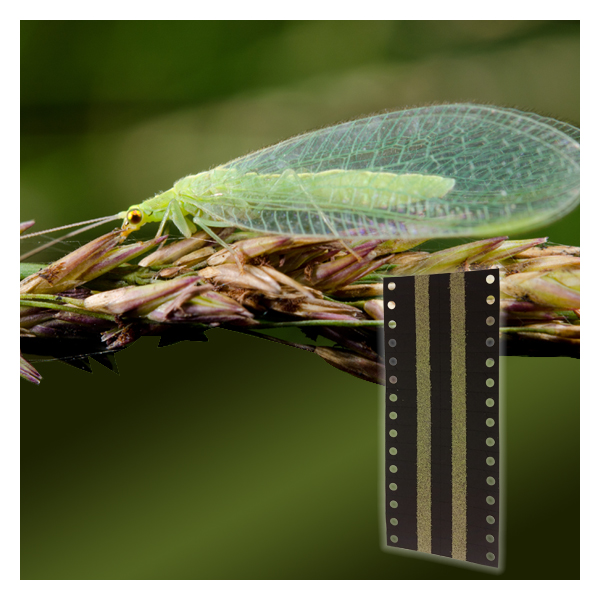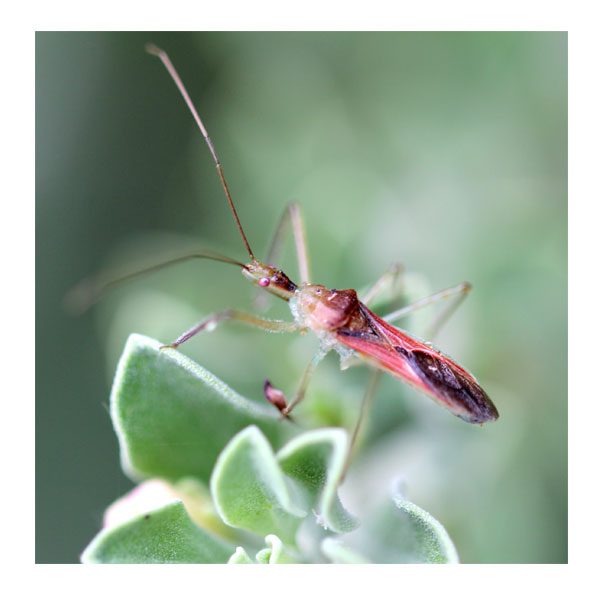Announcement
Collapse
No announcement yet.
Possible thrips / mold 5-7 days before harvest need advice
Collapse
X
-
This is my first grow at the start I was over protective and thought everything was a disaster then I got tired of wasting energy on false alarms and got lax 2 of my plants hermied so the over protectiveness kicked in again I’ve been monitoring my one main plant like a mother hen which is how I found this issue so quick I was looking over the plant and saw a sugar leaf with what looked like a drop of glinting milk on it I panicked and tore it off then I realized the leaf next to it had a tiny tiny spot too I ripped that off too I then caught a breath and examined my plant thoroughly I found 3-4 other spots very similar I looked it up and think it might be thrips or possibly powdery mold right now it seems to be mostly localized around the cola closest to my fan which is what makes me think it’s less likely mold (the only reason I’m even considering mold is well I don’t have a dehumidifier my areas very dry in winter and I planned to be done before spring showers hit basing timeline on the strains flowering time which I now know was silly newb mistakes) that said humidity hasn’t been super high 55-60% but how will thrips effect harvest this plant is so close it seems to be one of those that makes a last minute dash to ripen and I want to give it atleast 4-5 more days because I’m noticing drastic improvement daily now any advice is welcome currently I’m just planning to monitor and hope for the best if it progresses I’ll harvest a little early
Last edited by TheKieftan; 03-26-2021, 09:32 AM.Tags: None
-
A few bite marks here and there is not bad. I would recommend you get a white paper and place it under the canopy and shake the plant vigorously and you will then see what drops on the paper. Then you can identify if it’s a pest? And which pest? Some people treat a plant for something they don’t have and wonder why it doesn’t work.
-
Looks like you have nitrogen toxicity and ph fluctuation to me but the pictures are real blurry for details.Space for Rent.
- Likes 1
Comment
-
That last photo looks like scale, a pest. They look like bumps on the plants. If you squeeze them they ooze. There’s both soft and hard body versions. The soft body are so flat that the bump looks like a part of the plant. Look under the leaves at the veins, they like to suck the juice out at that point.
Use this pest guide to learn about pest insects that are damaging plants in your home, garden, greenhouse and farm. Click on a pest category and find out about their biology, description, and suggested methods of control.
https://getbusygardening.com/types-o...nt-bugs/#scale
Just looked up thrips and it happened to be another name listed with scale. So I’m with you on that guess looks like.Last edited by MrPNW; 03-26-2021, 12:15 AM.
Equipment
5x5x8 Gorilla Grow Tent • Spider Farmer SF4000 • AC Infinity 8” TS Fan/Carbon Filter
———————————————————————————————————-
1st Grow
Started 01 Oct 2020 • Flipped 12/12, 01 Jan 2021 • Harvested 08 Mar 2021
Black Gold organic potting soil • Nature’s Living Soil • Compost Tea using NLS
Pennywise (Harlequin/Jack the Ripper) 1:1 ratio, Indica dominant, medium size plant
Comment
-
Yeah sadly and makes sense the worst is near the fan and that’s apparently how they travel by air current and I’m only noticing spots on sugar leaves or fan leaves that are in a cola which again apparently they like to hang around buds what I don’t know is how this effects harvest like will I need to separate them from my weed before drying that sort of thing
-
Maybe some ladybugs could wipe them out. https://www.arbico-organics.com/cate...er-guide-scale
These also sound awesome;
 FREE SHIPPING IN THE 48 CONTIGUOUS STATES! Ships Monday-Friday via USPS only. Order processing can take up to 48 hours. Green Lacewing Eggs on Hanging Cards allow for easy and even release of lacewing eggs throughout the growing area. Ideal for use in orchards, indoor growing, greenhouses and row cropping. Introduce green lacewing at the first sign of pest infestation for best results. Please call us at 1-800-827-2847 to set up a recurring shipment program. Green Lacewing Preferred Food: aphids , mealybugs , spider mites , leafhopper nymphs, moth eggs, scale , thrips , and whiteflies . Optimal Temperatures: 67-90°F, RH >30% Life Cycle & Behavior: Lacewing eggs hatch within 3-10 days of receipt depending on temperature and humidity in the release area. Once hatched, lacewing larvae feed for 2-3 weeks on a variety of soft-bodied insects. Larvae are recognizable by their prominent mandibles (mouthparts), alligator-like appearance and pale coloration with dark markings. The larvae molt as they grow and mature through 3 instar stages. Pupation occurs in silken cocoons on the undersides of leaves or under loose bark. Green lacewing will overwinter in the pupal stage in cooler climates. Adults emerge from the cocoons with large veined (lacy) wings ready to mate and lay more eggs. Adult green lacewings feed on pollen, nectar and honeydew while aiding in pollination. The complete life cycle lasts roughly 30 days. Release Rates: For best results, release Green Lacewing early in the season when pest numbers are low. Make a minimum of three releases. In gardens and greenhouses, release eggs at approximately 1,000 eggs per 2,000 sq. ft. For farms release 5,000 to 50,000 per acre depending upon infestation. PLEASE NOTE: Ants and aphids have a symbiotic relationship. This is due to the fact that ants value the secretions of the aphids (honeydew) as a food source. The ants aggressively protect the aphids from other insect threats and the aphids produce the honeydew they crave. For this reason, before you begin any treatment to control aphids with predatory insects you will need to eradicate the ants in the area to be treated. Otherwise, they will wipe out any beneficials you introduce. Additional Information: Nature Abhors a Vacuum: Why Continuity Matters in the Garden Identify your pest to learn more about its life cycle, damage and control measures. Click here for more information about integrated pest management solutions.
FREE SHIPPING IN THE 48 CONTIGUOUS STATES! Ships Monday-Friday via USPS only. Order processing can take up to 48 hours. Green Lacewing Eggs on Hanging Cards allow for easy and even release of lacewing eggs throughout the growing area. Ideal for use in orchards, indoor growing, greenhouses and row cropping. Introduce green lacewing at the first sign of pest infestation for best results. Please call us at 1-800-827-2847 to set up a recurring shipment program. Green Lacewing Preferred Food: aphids , mealybugs , spider mites , leafhopper nymphs, moth eggs, scale , thrips , and whiteflies . Optimal Temperatures: 67-90°F, RH >30% Life Cycle & Behavior: Lacewing eggs hatch within 3-10 days of receipt depending on temperature and humidity in the release area. Once hatched, lacewing larvae feed for 2-3 weeks on a variety of soft-bodied insects. Larvae are recognizable by their prominent mandibles (mouthparts), alligator-like appearance and pale coloration with dark markings. The larvae molt as they grow and mature through 3 instar stages. Pupation occurs in silken cocoons on the undersides of leaves or under loose bark. Green lacewing will overwinter in the pupal stage in cooler climates. Adults emerge from the cocoons with large veined (lacy) wings ready to mate and lay more eggs. Adult green lacewings feed on pollen, nectar and honeydew while aiding in pollination. The complete life cycle lasts roughly 30 days. Release Rates: For best results, release Green Lacewing early in the season when pest numbers are low. Make a minimum of three releases. In gardens and greenhouses, release eggs at approximately 1,000 eggs per 2,000 sq. ft. For farms release 5,000 to 50,000 per acre depending upon infestation. PLEASE NOTE: Ants and aphids have a symbiotic relationship. This is due to the fact that ants value the secretions of the aphids (honeydew) as a food source. The ants aggressively protect the aphids from other insect threats and the aphids produce the honeydew they crave. For this reason, before you begin any treatment to control aphids with predatory insects you will need to eradicate the ants in the area to be treated. Otherwise, they will wipe out any beneficials you introduce. Additional Information: Nature Abhors a Vacuum: Why Continuity Matters in the Garden Identify your pest to learn more about its life cycle, damage and control measures. Click here for more information about integrated pest management solutions.
 General Pest Control In Gardens, Fields, Orchards and Greenhouses. The Leafhopper Assassin Bug, Zelus renardii is a hardworking ambush predator and excellent addition to any growing area. Contrary to what their common name suggests, they are generalist predators that feed on a variety of small to medium sized plant pests including aphids, mealybugs, caterpillars, thrips and more. Assassin Bugs begin feeding immediately after hatching, however, they cannot actively hunt prey until they reach 2nd instar. As they mature, they produce resin on their legs that allows them to trap prey and feed as they move. They kill prey by piercing with their rostrum (beak) and injecting a digestive enzyme. This allows Assassin Bugs to rapidly kill prey that is much larger than they are. Life Cycle: Assassin Bugs live approximately 2 months, which allows them to provide ongoing pest control in the release area. It can take up to 10 days for eggs to hatch, so take that into account when planning your Integrated Pest Management program. Assassin Bugs begin feeding as soon as they emerge. Once they reach 2nd instar, they will actively hunt for prey and continue to do so as they mature into adulthood. With adequate food supplies and a suitable environment, they may lay eggs and reproduce in the growing area. They are likely to stay in the treatment area until their food sources have diminished making them a suitable alternative to ladybugs in warmer climates. Note: Assassin Bugs molt multiple times as they grow. The shed skins may resemble dead Assassin Bugs, but are not evidence of noticeable die off. Check the release area for live assassin bugs periodically and contact us if you have questions or concerns. Temperature Considerations: Zelus renardii is tolerant to adverse temperature/humidity levels and has shown effectiveness in hot climates. Temperature and humidity have not been shown to inhibit colony establishment or feeding. Quantity discounts available for orders of 10 or more of any individual size. Shop all ARBICO Organics products here . Related Information: Blog: Backyard Assassins - Assassin Bugs, Zelus renardiiLast edited by MrPNW; 03-26-2021, 07:43 PM.
General Pest Control In Gardens, Fields, Orchards and Greenhouses. The Leafhopper Assassin Bug, Zelus renardii is a hardworking ambush predator and excellent addition to any growing area. Contrary to what their common name suggests, they are generalist predators that feed on a variety of small to medium sized plant pests including aphids, mealybugs, caterpillars, thrips and more. Assassin Bugs begin feeding immediately after hatching, however, they cannot actively hunt prey until they reach 2nd instar. As they mature, they produce resin on their legs that allows them to trap prey and feed as they move. They kill prey by piercing with their rostrum (beak) and injecting a digestive enzyme. This allows Assassin Bugs to rapidly kill prey that is much larger than they are. Life Cycle: Assassin Bugs live approximately 2 months, which allows them to provide ongoing pest control in the release area. It can take up to 10 days for eggs to hatch, so take that into account when planning your Integrated Pest Management program. Assassin Bugs begin feeding as soon as they emerge. Once they reach 2nd instar, they will actively hunt for prey and continue to do so as they mature into adulthood. With adequate food supplies and a suitable environment, they may lay eggs and reproduce in the growing area. They are likely to stay in the treatment area until their food sources have diminished making them a suitable alternative to ladybugs in warmer climates. Note: Assassin Bugs molt multiple times as they grow. The shed skins may resemble dead Assassin Bugs, but are not evidence of noticeable die off. Check the release area for live assassin bugs periodically and contact us if you have questions or concerns. Temperature Considerations: Zelus renardii is tolerant to adverse temperature/humidity levels and has shown effectiveness in hot climates. Temperature and humidity have not been shown to inhibit colony establishment or feeding. Quantity discounts available for orders of 10 or more of any individual size. Shop all ARBICO Organics products here . Related Information: Blog: Backyard Assassins - Assassin Bugs, Zelus renardiiLast edited by MrPNW; 03-26-2021, 07:43 PM.
-

Comment